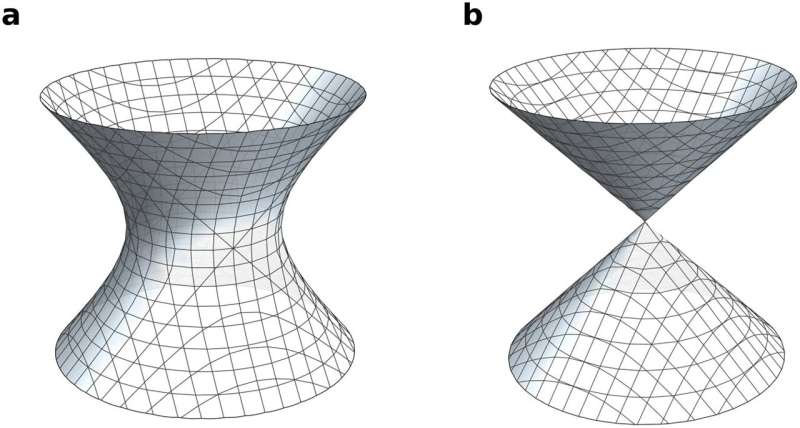This article has been reviewed according to Science X's editorial process and policies. Editors have highlighted the following attributes while ensuring the content's credibility:
fact-checked
peer-reviewed publication
trusted source
proofread
Machine learning unravels mysteries of atomic geometry

New research has used machine learning to find the properties of atomic pieces of geometry, in pioneering work that could drive the development of new results in mathematics.
Mathematicians from the University of Nottingham and Imperial College London have, for the first time, used machine learning to expand and accelerate work identifying "atomic shapes" that form the basic pieces of geometry in higher dimensions. Their findings have been published in Nature Communications.
The research group started their work to create a periodic table for shapes several years ago. The atomic pieces are called Fano varieties. The team associate a sequence of numbers, called quantum periods, to each shape, giving a "barcode" or "fingerprint" that describes the shape. Their recent breakthrough uses a new machine learning methodology to sift very quickly through these barcodes, identifying shapes and their properties such as the dimension of each shape.
"For mathematicians, the key step is working out what the pattern is in a given problem. This can be very difficult, and some mathematical theories can take years to discover," says Alexander Kasprzyk.
"This is where artificial intelligence could really revolutionize mathematics as we have shown that machine learning is a powerful tool for spotting patterns in complex domains like algebra and geometry," says Professor Tom Coates.
Sara Veneziale, co-author and a Ph.D. student in the team, continues, "We're really excited about the fact that machine learning can be used in pure mathematics. This will accelerate new insights across the field."
More information: Tom Coates et al, Machine learning the dimension of a Fano variety, Nature Communications (2023). DOI: 10.1038/s41467-023-41157-1
Journal information: Nature Communications
Provided by University of Nottingham





















